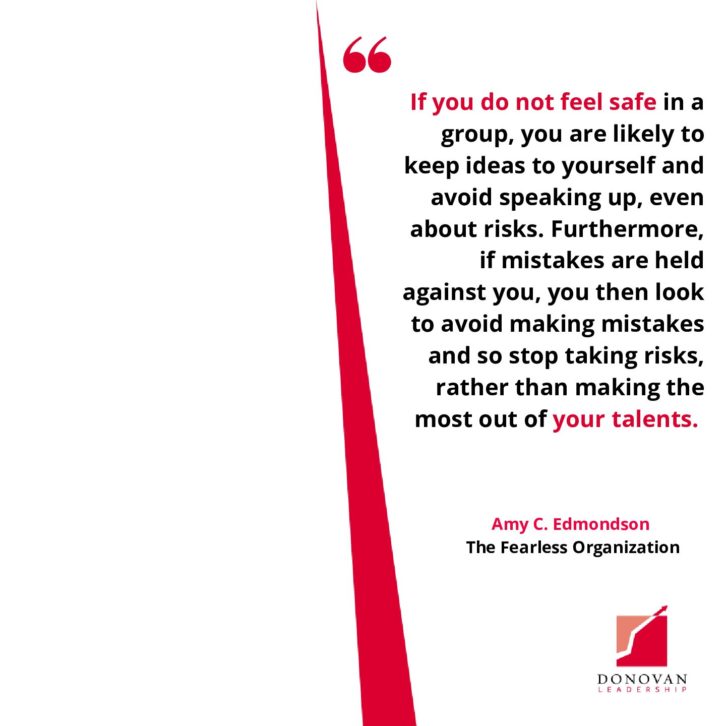Sharon sees psychological safety as being about providing the space for people to succeed. She believes people should feel that they are in a safe enough space, to take risks, to be wrong sometimes and make mistakes. It is about her team believing that being accountable is a good thing, to fail fast and get back up and start over again without blame or retribution.
She believes if they are safe enough to be accountable, and to shoot for the goals they are trying to achieve, it should be ok if they fail. Get back up again, she says, learn something and try again.
Some of her outlook was shaped by seeing people operating out of fear in what was called management by objectives in the 1980s. In that model, the leader was right about everything, and no-one would say anything to upset them. She always vowed from her early career as an individual contributor that she would always be an approachable leader.
But providing psychological safety is not about being nice to everyone.
Amy C. Edmondson, in the book The Fearless Organization, takes the view that psychological safety is not an “anything goes” environment where people are not expected to adhere to high standards or meet deadlines. It is not about becoming “comfortable” at work, Edmondson says.
In Sharon’s case, she believes people cannot be high performing, unless they are in an environment where they are respected for their work and their personhood. She wants her team to understand that no matter what their position in the organisation’s hierarchy, we are all at the same human level.
🙋 What is your view on the value of taking risks and making mistakes? 🙋♀️
Best regards, Brian

